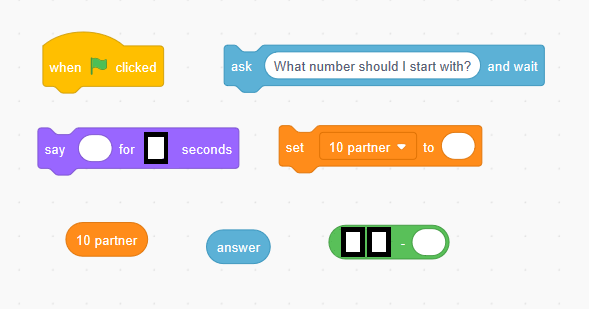Directions: Create code that will ask the user for a number and tell them it’s 10’s pair.
You can only use a command block once.
You can use the digits 0-5, at most once each.

Is there any code or numbers you did not use?
Code this in scratch and test it out, did anything happen that you didn’t expect?
What happens if you wanted to make 20’s partners?







